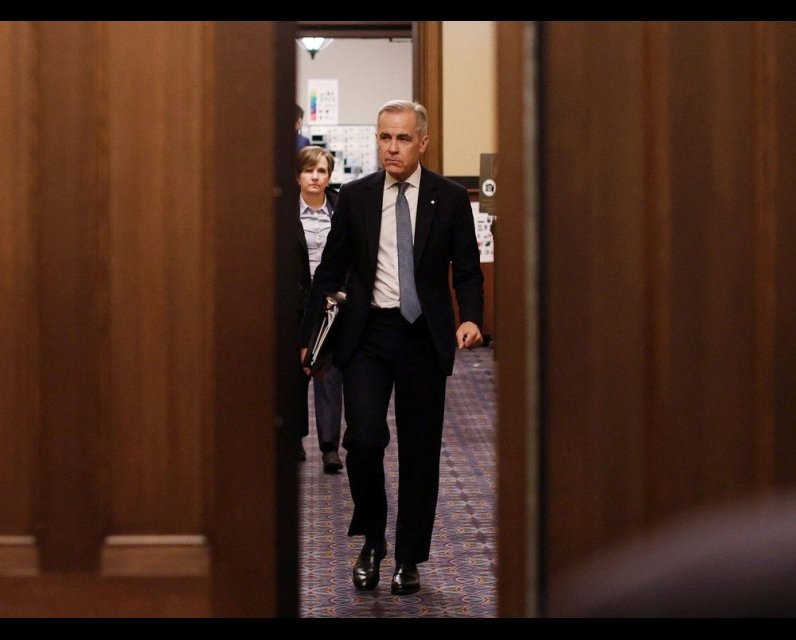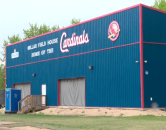Source Feed: National Post
Author: Simon Tuck
Publication Date: April 26, 2025 - 04:00
Higher stakes, higher-profile campaigns? Not so much
April 26, 2025

OTTAWA — If this Canadian election is the most important in a generation, why do the two main parties seem to be running less public — or at least lower profile — campaigns?
Or, as some party officials insist, is it just that shaking hands, kissing babies, countless campaign stops and the other greatest hits from the past are no longer the smartest strategies?
With just a few days to go before Canadians head to the polls, Liberal Leader Mark Carney and the Conservatives’ Pierre Poilievre seem to be less focused on staying in the public’s eye, at least in comparison with previous campaigns.
The leaders, particularly Carney, are making noticeably fewer public campaign stops than many of their predecessors. Carney has also left the campaign trail three times by taking advantage of the incumbent’s opportunities to be seen as prime ministerial by returning to Ottawa for work-related matters.
While Poilievre has held large rallies that are very public, coverage of those events has been tightly controlled. Campaign staff make efforts to ensure that party attendees, including MPs, don’t speak with reporters — even outside the venues. The Conservatives’ efforts to maintain a tightly controlled campaign even include discouraging candidates from attending all-candidates’ debates in their ridings.
“The nature of campaigning has definitely changed,” said Anthony Koch, the managing principal at AK Strategies and former spokesman for Poilievre.
Koch said the Conservatives aren’t trying to run a lower-profile campaign, but are just emphasizing digital messaging over media interviews. Whereas journalists used to have a monopoly on providing campaign news, campaigns can now “micro-target” voters through podcasts, niche media, social media influencers and other online platforms, he said.
The leaders of both parties have also seemed to devote more campaign interviews with local or ethnic media.
And the two leaders’ debates, while generally substantive and lively, were void of any notable attempts to go for an opponent’s jugular. That meant less follow-up coverage.
These strategies seem at odds with Campaigning 101, which says that a candidate’s priorities are to get their messages out as often and as loudly as possible.
To make the campaign even cooler, there are also fewer policy differences between the two main contenders than might be expected. Carney moved quickly to remove or reduce some of the key policy distinctions. On March 14, just hours after being sworn in as prime minister, he cancelled the consumer carbon tax. A week later, he cancelled the proposed increase to the capital gains inclusion rate.
Both policy moves had been advocated strenuously by Poilievre before Carney co-opted them.
When the two parties’ platforms were finally released in late April, there was again plenty of overlap: promised tax cuts and spending hikes that meant little interest in balancing the budget, commitments to pipelines or at least “major projects,” and modest commitments to defence spending increases.
So if the stakes are so high in this election, as everyone seems to agree, why aren’t the campaigns’ profiles following suit?
Dennis Pilon, a political science professor at York University in Toronto, said the tightly controlled and seemingly low-profile campaigns are largely a function of technological changes that make candidates less reliant on trying to grab a newspaper headline or get a sound bite on television.
Political parties today would often rather use YouTube, Instagram and other social media to speak directly to voters, Pilon said, instead of the more traditional approaches that included allowing their messages to be filtered through journalists.
“Twenty or 30 years ago, if you weren’t in the (traditional) media, you just didn’t exist.”
And from a campaign’s point of view, sometimes less is more. Or more is less.
Party sources agreed with Pilon that the strategic changes have a lot to do with the digital age.
A Liberal campaign source said it’s much easier to reach masses of voters through the various digital and social media platforms than the old ways.
“We’re adjusting to the time.”
Campaign officials admit that leaders’ personalities and predilections also play a role. Some candidates, such as former prime minister Justin Trudeau, seem to love and gain energy from campaign stops, while others prefer policy and would rather be doing anything other than enduring small talk at a community barbeque.
The Liberal campaign source said that Carney is a much different candidate than Trudeau, who kept a frenetic pace on the campaign trail. There are “different leadership styles.”
Campaign officials and academics also say that campaign schedules are also influenced by how well a candidate is doing in the race. In Carney’s case, for example, most recent opinion polls have him ahead by about a handful of percentage points, likely leaving his campaign team more risk averse.
Sanjay Jeram, a political scientist at Simon Fraser University in Vancouver, said in many circumstances the risk outweighs the reward in exposing a candidate to high-profile events or interviews. “There’s almost more to be lost than to be gained, especially if you’re the front-runner.”
But Jeram also pointed out that the new campaign strategies and the “message discipline” may come with a cost in a democratic society. It’s now easier to mislead voters, he said, because many will receive their political messages without the context that journalists traditionally have provided.
National Post
Get more deep-dive National Post political coverage and analysis in your inbox with the Political Hack newsletter, where Ottawa bureau chief Stuart Thomson and political analyst Tasha Kheiriddin get at what’s really going on behind the scenes on Parliament Hill every Wednesday and Friday, exclusively for subscribers. Sign up here.
“I am paddling 365 km for the month,” Kim Inglis said. “The whole idea behind the 365 is that autism doesn’t take a break." This is the 2nd annual event.
May 19, 2025 - 19:28 | Klaudia Van Emmerik | Global News - Canada
Alberta Premier Danielle Smith’s former chief of staff lived in a $1.6-million Edmonton home owned by the sister of Sam Mraiche, a businessman whose dealings with the provincial health authority are subject to multiple investigations. Marshall Smith, who served as the Premier‘s chief of staff between October, 2022, and October, 2024, lived at the property, not far from the University of Alberta, after it was purchased by Mr. Mraiche‘s sister Fatima Mraiche in August, 2023.
May 19, 2025 - 19:19 | Carrie Tait, Tom Cardoso, Stephanie Chambers | The Globe and Mail
A projector, speakers, ball flight monitor, TV and scoreboard controller are amongst the $30,000 in equipment stolen from the St. Albert Minor Baseball Association on May 14.
May 19, 2025 - 19:06 | Kabi Moulitharan | Global News - Canada



Comments
Be the first to comment